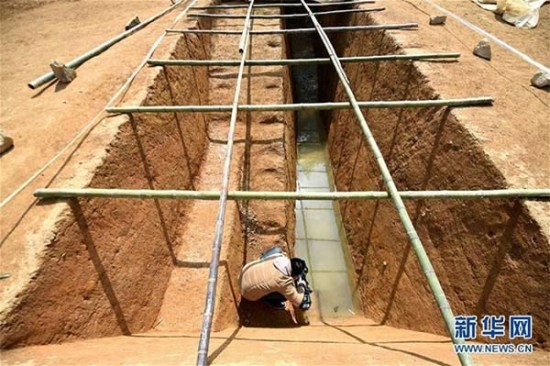
Archaeologists have excavated 11 dikes near the ancient city of Liangzhu in the Yuhang district of Hangzhou. /Xinhua Photo
The Liangzhu relic site in Hangzhou, the capital of China’s Zhejiang Province, was officially submitted for UNESCO's World Heritage Site List, according to China Daily.
Liangzhu is one of the Neolithic cultures in China, and the greatest feature of this cultural site is jade wares.
Representing the Chinese civilization between 3,300 BC and 2,300 BC, the Liangzhu relic site is roughly contemporaneous with the Old Kingdom period in ancient Egypt.
Some scholars believed the reason why Liangzhu culture suddenly disappeared after thriving thousands of years is the excessive reliance on a single crop.
But further research indicated human factors are more likely the reason behind the decline of Liangzhu civilization.
The ruins of Liangzhu city were discovered in 2007, and later in 2009, the large dam sites surrounding the city were unearthed. According to the China Daily report, archaeologists also found that the Liangzhu ancestors started to use characters about 5,000 years ago, which pushed forward China's history of writing more than 1,000 years.
There are more than 500 sites excavated, and the founding of Liangzhu culture played an important role in shaping ancient Chinese civilization.


















































